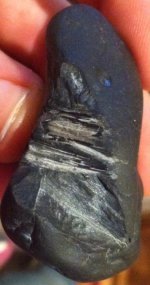There is nothing about this rock or your story that could be used to justify it being a meteorite. I've handled thousands of meteorites and that is simply not one. And you could stand to do a bit of research about meteors and meteorites to at least try and bring a minimal about of credibility to your story. It just has too many holes in it. I know this is an opinion and you are not interested in opinions, you prefer your own reality. But this is for others that may think you are right.
You have a meteorwrong, nothing more.
I am sure you must know why your opinion cannot be taken as gospel. Even if it is a meteor wrong. It is important for the finder to reveal the truth by analysis.Even if your opinion is correct,maybe you could suggest a way of helping him to reach the conclusion with your expertise.Otherwise you are just pissing on someones enthusiasm. I am always grateful to hear expert analysis tips. Please do share your expertise. The pissing on someones enthusiasm angle is less welcome and uninteresting.Boring. Its nice to be important but its more important to be nice.






